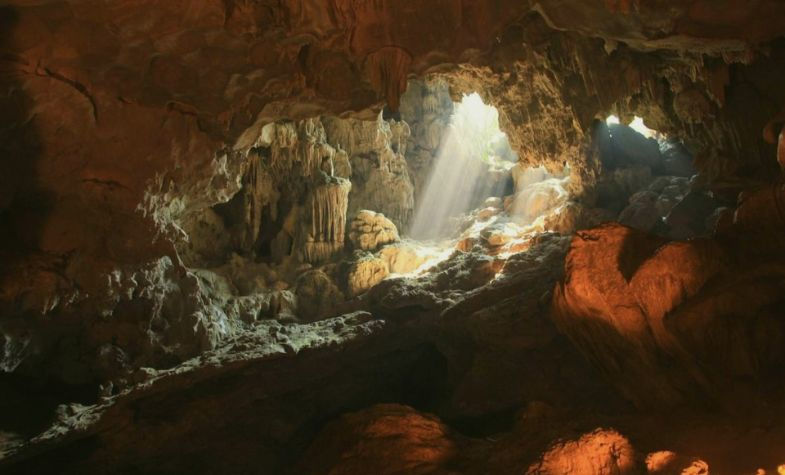How Halong Bay was formed: A journey through time
Picture yourself gliding across emerald-green waters, surrounded by towering limestone islands that rise dramatically from the sea. The air is filled with the whispers of ancient legends, the call of exotic birds, and the gentle lapping of waves against hidden caves. This is Halong Bay, one of the most breathtaking and awe-inspiring destinations in the world, a place where nature and history collide to create an unforgettable experience. Let’s dive into the fascinating story of how Halong Bay was formed and why it continues to captivate travelers from all corners of the globe.
The geological history of Halong Bay

Halong Bay’s formation dates back over 500 million years, shaped by tectonic activity, climate changes, and sea level fluctuations. The bay's iconic limestone karsts were created through a complex geological process involving sediment deposition, tectonic uplift, and erosion. Over millions of years, these forces sculpted the stunning rock formations seen today.
During the Paleozoic and Mesozoic eras, layers of sediment accumulated on the seabed, gradually compressing into limestone. Subsequent movements of the Earth's crust caused the land to rise, and rainwater, rich in carbon dioxide, slowly eroded the limestone, creating the magnificent caves, arches, and towers that define Halong Bay today.
How Halong Bay was formed: A journey through millions of years

The process of Halong Bay’s formation can be broken down into three key stages:
Sedimentary deposition (500 million years ago) – Ancient seas deposited layers of sediment that eventually became limestone.
Tectonic uplift and erosion (250 million years ago) – The movements of the Earth's crust raised the limestone above sea level, where wind and rain began sculpting it.
Karst formation (10,000–20,000 years ago) – Sea level changes during the Ice Ages created the bay's unique karst landscape, with caves, grottoes, and towering pillars emerging from the waters.
Today, Halong Bay continues to evolve as weathering and erosion shape its scenery, making it a living testament to nature’s artistry.
The breathtaking beauty of Halong Bay and its unique landscape
Halong Bay is home to nearly 2,000 limestone islands and islets, each with distinct shapes and formations. The bay’s striking beauty is further enhanced by its lush greenery, hidden caves, and crystal-clear waters. Some of the most famous formations include:
Sung Sot Cave (Surprise Cave) – A massive cavern with intricate stalactites and stalagmites.
Dau Go Cave – A historic cave with ancient legends tied to Vietnamese resistance against invaders.
Fighting Cock Islet – Two towering rocks resembling a pair of roosters facing off, an iconic symbol of Halong Bay.
Visitors can explore the bay by boat, kayak, or even seaplane, experiencing its surreal beauty from different perspectives.
What makes Halong Bay special? Myths, legends, and natural wonders

Beyond its geological significance, Halong Bay is steeped in folklore. According to legend, the bay was created by a family of dragons sent by the gods to protect Vietnam from invaders. The dragons spat out jewels and jade, forming the thousands of limestone islands that shielded the land from attack. This legend gives Halong Bay its name, which means “Descending Dragon” in Vietnamese.
Aside from myths, the bay is home to a diverse ecosystem, including coral reefs, mangroves, and rare wildlife such as the endangered Cat Ba langur. Its blend of history, culture, and nature makes it a truly special destination.
Halong Bay’s Rock formations: The science behind the stunning scenery

Halong Bay’s rock formations are a classic example of karst topography, a landscape shaped by the dissolution of soluble rocks like limestone. This process, known as chemical weathering, occurs when acidic rainwater seeps into cracks in the limestone, dissolving it and forming caves, tunnels, and towers over time.
Key scientific aspects of Halong Bay’s rock formations include:
Sinkholes and underground rivers: These features contribute to the formation of large caves. Over time, rainwater and groundwater slowly dissolve the limestone, creating vast networks of underground rivers and caverns. Some of these caves collapse, forming spectacular sinkholes and hidden lagoons that can be explored by kayak.
Limestone pillars: The iconic towering rock formations seen in Halong Bay are remnants of ancient limestone layers that have resisted erosion. These dramatic pillars have been sculpted by the forces of wind and water, standing as natural monuments to geological history. Many of them are covered with lush vegetation, providing a stunning contrast to the emerald waters below.
Stalactites and stalagmites: Found in many of the bay’s caves, these formations are created by the slow dripping of mineral-rich water over thousands of years. Stalactites hang from the ceilings of caves like icicles, while stalagmites rise from the ground. When these formations meet, they form impressive limestone columns that enhance the mysterious beauty of Halong Bay’s hidden grottos.
Halong Bay is more than just a beautiful travel destination, it’s a geological masterpiece shaped by millions of years of natural processes. From its limestone karsts and caves to its rich legends and biodiversity, every aspect of Halong Bay tells a story of nature’s power and mystery. Whether you’re drawn to its breathtaking landscapes, scientific wonders, or cultural myths, Halong Bay remains one of the world’s most extraordinary natural wonders.













